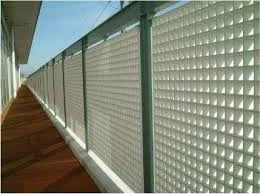
-
 Afrikaans
Afrikaans -
 Albanian
Albanian -
 Amharic
Amharic -
 Arabic
Arabic -
 Armenian
Armenian -
 Azerbaijani
Azerbaijani -
 Basque
Basque -
 Belarusian
Belarusian -
 Bengali
Bengali -
 Bosnian
Bosnian -
 Bulgarian
Bulgarian -
 Catalan
Catalan -
 Cebuano
Cebuano -
 China
China -
 China (Taiwan)
China (Taiwan) -
 Corsican
Corsican -
 Croatian
Croatian -
 Czech
Czech -
 Danish
Danish -
 Dutch
Dutch -
 English
English -
 Esperanto
Esperanto -
 Estonian
Estonian -
 Finnish
Finnish -
 French
French -
 Frisian
Frisian -
 Galician
Galician -
 Georgian
Georgian -
 German
German -
 Greek
Greek -
 Gujarati
Gujarati -
 Haitian Creole
Haitian Creole -
 hausa
hausa -
 hawaiian
hawaiian -
 Hebrew
Hebrew -
 Hindi
Hindi -
 Miao
Miao -
 Hungarian
Hungarian -
 Icelandic
Icelandic -
 igbo
igbo -
 Indonesian
Indonesian -
 irish
irish -
 Italian
Italian -
 Japanese
Japanese -
 Javanese
Javanese -
 Kannada
Kannada -
 kazakh
kazakh -
 Khmer
Khmer -
 Rwandese
Rwandese -
 Korean
Korean -
 Kurdish
Kurdish -
 Kyrgyz
Kyrgyz -
 Lao
Lao -
 Latin
Latin -
 Latvian
Latvian -
 Lithuanian
Lithuanian -
 Luxembourgish
Luxembourgish -
 Macedonian
Macedonian -
 Malgashi
Malgashi -
 Malay
Malay -
 Malayalam
Malayalam -
 Maltese
Maltese -
 Maori
Maori -
 Marathi
Marathi -
 Mongolian
Mongolian -
 Myanmar
Myanmar -
 Nepali
Nepali -
 Norwegian
Norwegian -
 Norwegian
Norwegian -
 Occitan
Occitan -
 Pashto
Pashto -
 Persian
Persian -
 Polish
Polish -
 Portuguese
Portuguese -
 Punjabi
Punjabi -
 Romanian
Romanian -
 Russian
Russian -
 Samoan
Samoan -
 Scottish Gaelic
Scottish Gaelic -
 Serbian
Serbian -
 Sesotho
Sesotho -
 Shona
Shona -
 Sindhi
Sindhi -
 Sinhala
Sinhala -
 Slovak
Slovak -
 Slovenian
Slovenian -
 Somali
Somali -
 Spanish
Spanish -
 Sundanese
Sundanese -
 Swahili
Swahili -
 Swedish
Swedish -
 Tagalog
Tagalog -
 Tajik
Tajik -
 Tamil
Tamil -
 Tatar
Tatar -
 Telugu
Telugu -
 Thai
Thai -
 Turkish
Turkish -
 Turkmen
Turkmen -
 Ukrainian
Ukrainian -
 Urdu
Urdu -
 Uighur
Uighur -
 Uzbek
Uzbek -
 Vietnamese
Vietnamese -
 Welsh
Welsh -
 Bantu
Bantu -
 Yiddish
Yiddish -
 Yoruba
Yoruba -
 Zulu
Zulu
grp tank
Exploring GRP Tanks An Innovative Solution for Water Storage
In the modern world, the demand for reliable water storage solutions has never been greater. With growing populations, industrial needs, and agricultural requirements, the need for efficient and durable storage systems is critical. One such innovative solution is the Glass Reinforced Plastic (GRP) tank, which has gained popularity due to its numerous benefits.
GRP tanks are constructed using a composite material that combines glass fibers with a polymer resin. This results in a strong yet lightweight tank capable of withstanding various environmental conditions. One of the most significant advantages of GRP tanks is their corrosion resistance. Unlike traditional materials such as steel or concrete, GRP does not rust or corrode, which makes it an ideal choice for storing drinking water, wastewater, and chemicals. This property ensures the longevity of the tanks, reducing maintenance costs and the need for frequent replacements.
.
In addition to their practical properties, GRP tanks are also known for their ease of installation. Unlike concrete tanks, which require extensive site preparation and curing time, GRP tanks can be assembled quickly and efficiently. Their lightweight nature makes transportation easier, and installation typically requires fewer resources, leading to reduced project timelines and costs. This aspect is particularly beneficial for projects that require rapid water storage solutions, such as emergency response situations or temporary constructions.
grp tank

Moreover, GRP tanks offer excellent thermal insulation properties. This is crucial in applications where temperature control is necessary, such as in the storage of certain chemicals or maintaining the desired temperature of drinking water. The thermal properties of GRP help mitigate heat transfer, ensuring that the stored contents remain stable under varying environmental conditions.
When it comes to sustainability, GRP tanks have a lower environmental impact compared to traditional materials. The production processes of GRP are less energy-intensive and generate fewer carbon emissions. Furthermore, these tanks can be designed to be fully recyclable at the end of their lifecycle, aligning with the growing emphasis on sustainability and eco-friendly practices in various industries.
Despite their many benefits, it is essential to choose a reliable supplier when procuring GRP tanks. Quality control during the manufacturing process is crucial to ensure that the products meet necessary standards and regulations. Additionally, potential users should consider factors such as the specific application, required capacity, and local environmental conditions when selecting a GRP tank.
In conclusion, GRP tanks represent a significant advancement in water storage technology. Their combination of durability, versatility, ease of installation, and low environmental impact makes them an attractive option for various industries and applications. As the global community continues to seek sustainable and efficient solutions for water management, GRP tanks are poised to play a pivotal role in meeting these demands. Whether for residential, commercial, or industrial use, investing in a GRP tank can provide not only a reliable storage solution but also contribute positively to the overall sustainability goals of any organization or community.









